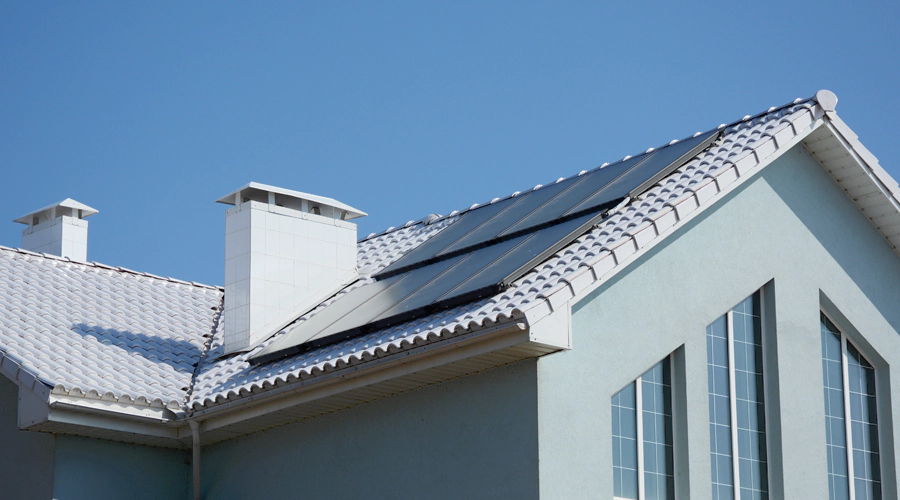Active and Passive Solar Energy
Solar energy is nonpolluting and renewable. Different kinds of technologies can harness solar radiation and convert it into solar energy. Buildings can employ either active or passive solar heating. Each method has its own set of advantages and disadvantages.
The use of solar radiation for energy is an ancient concept, but recent concerns about the environmental impact of burning fossil fuels have made solar energy a hot topic. Modern solar energy technologies harness the heat generated from the sun to power residential and industrial heating and cooling systems through the use of photovoltaic, or PV, panels. Also known as solar cells, these devices capture and convert solar power into electrical energy. How this energy is collected and distributed defines the difference between active and passive solar collectors.
Passive Solar Design
A passive solar system does not involve mechanical devices or the use of conventional energy sources beyond that needed to regulate dampers and other controls, if any. Classic examples of basic passive solar structures are greenhouses, sunrooms and solariums — as the sun’s rays pass through the glass windows, the interior absorbs and retains the heat. Modeling this concept in your home can cut heating costs by half compared to heating the same home by traditional means without the use of passive solar. In terms of design, success of the passive solar system depends on orientation and the thermal mass of the structure’s exterior walls, which means their ability to store and redistribute heat.
Passive Solar Collectors
A passive solar system typically relies on south-facing windows as collectors to capture solar energy, although some systems may also use supplemental PV panels. In any case, the goal is to redistribute the energy collected according to a fundamental law of thermodynamics, which states that heat moves from warm to cool areas and surfaces. The simplest method of transferring the heat from passive solar collectors is through convection. To illustrate, think of a sunroom with windows on a southern wall. As the sun’s rays travel through the glass, the heat is directed into the room. It then rises to areas where the air is cooler, including other rooms beyond and above.
Active Solar Design
Active solar systems use external sources of energy to power blowers, pumps and other types of equipment to collect, store and convert solar energy. Once energy from the sun is absorbed, it is stored for later use. Small systems are used to furnish electricity for heating and cooling systems in homes and other buildings, while large systems can furnish power for entire communities
Active Solar Collectors
Solar collectors are more complex than passive collectors in both design and mechanism. They consist of flat-plate PV panels that are usually mounted and remain stationary, although some are designed to track the sun throughout the course of the day. In some designs, multiple panels are connected together to form modules. Active solar collectors contain either air or a liquid as a conductor. Those that use air are referred to as “air collectors,” while liquid-based types are called “hydronic collectors”. The advanced design of these collectors makes an active solar heating system the most cost-effective in terms of reducing reliance on traditional energy sources.
Active or Passive Solar: Which Benefits You More?
When we think of all the ways the sun can help us live better, more comfortable lives, we realize it’s no wonder solar power is gaining popularity every day. Using passive solar energy in easy ways every day (like opening your blinds for the sun’s warmth on a cool morning) can lower your electric bills, but you’ll see real savings by combining these practical, everyday passive solar measures with a solar PV installation.
Active vs. Passive Solar Heating
Installation of either active or passive solar heating systems provides monetary benefits in the long run. While both passive and active solar heating systems are similar in terms of the renewable nature of the energy source used, they have several differences. The most important difference is that while active solar heating systems can be easily incorporated in the existing building, a passive solar heating system needs no equipment to be installed. A passive solar heating system does not cost anything in terms of additional infrastructure or equipment. The initial planning and construction costs, however, cannot be ignored.




